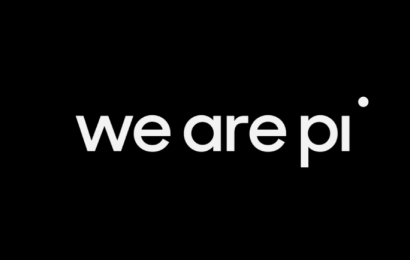Startups tips: Smart solutions to boost team output
It’s no secret that businesses today need to find ways to work smarter, not harder. The global economy is constantly changing, and keeping up with the competition can be challenging. If you want your business to succeed, you need a productive and efficient team. Luckily, there are plenty of smart solutions out there that can help you boost your team’s output. This blog post will discuss some of the best methods for improving productivity.
1) Automation:
Automation is an invaluable tool for boosting team productivity. Automation can reduce the need for manual labour and free up time to focus on higher-value tasks. It can also increase efficiency by eliminating human error and streamlining processes.
For example, automation can be used to automate mundane tasks such as data entry, invoicing, scheduling, customer service, and more. By automating these types of functions, you can save your team from spending precious time on tedious work that doesn’t require a lot of critical thinking or creativity. Automation can also help improve customer satisfaction by providing quicker responses and solutions to customer inquiries.
In addition, automation can help increase accuracy in projects where mistakes could be costly. For instance, in the legal field, automated contracts can ensure that all necessary information is included in the document and that it is approved correctly before being finalised. Firo-B test can also help to automate product development and personal developing processes.
Moreover, automation technology has opened up opportunities for businesses to do better analytics and forecasting with data-driven insights that would otherwise be impossible with manual processes alone. This helps organisations increase their output while simultaneously reducing their costs due to fewer errors in production or analysis.
Overall, automation is an incredibly valuable asset when it comes to improving team productivity and boosting business performance. By using automation strategically, teams will be able to work smarter instead of more complexly while still achieving their desired results quickly and efficiently.
2) Time Management:
Time management is an essential component of working more intelligently, not harder. Good time management can help teams work more efficiently and productively. It also helps prioritise tasks and eliminate wasted time on non-essential activities.
One way to implement effective time management is to create a daily schedule that outlines what must be done daily. This should include both important tasks as well as smaller ones that can easily be delegated or automated. Individuals are held accountable for completing their work within the allotted time frame by designating specific times for each activity. Additionally, it’s important to set realistic deadlines for projects so that teams don’t overextend themselves or become overwhelmed with too much work in too little time.
Another key element of good time management is communication between team members. Regular check-ins and updates are essential to ensure that everyone is on the same page and understands what needs to be accomplished by a specific date or time. Technology can also be leveraged here as many apps and programs are now available that make communication among teams more manageable than ever before.
Finally, it’s important to remember that while good time management practices are essential, it’s equally important to take breaks throughout the day in order to stay motivated and productive in the long run. Regular breaks allow teams to recharge and return refreshed, ready for another round of productivity without burning out or becoming frustrated with their progress.
Overall, proper time management plays a vital role in helping businesses achieve their goals efficiently and effectively. By following these best practices, teams will be able to maximise their output while still finding enough leisure time for themselves so they can stay energised throughout the day.
3) Collaboration Tools:
Collaboration tools are an important component of working smarter, not more complicated. They enable teams to cooperate and communicate more effectively in order to maximise their productivity. These tools come in the form of software, apps, and platforms that allow teams to share files, documents, comments and tasks quickly and easily.
The most common types of collaboration tools include project management software that allows teams to monitor progress, assign tasks, set deadlines and stay updated on the overall status of a project. Additionally, there are many messaging applications, such as Slack which provide a platform for accessible communication between team members no matter where they’re located. This can save time by reducing the number of emails exchanged among team members.
Other collaboration tools include video conferencing tools like Zoom or Google Hangouts, which enable remote teams to work together in real-time without having to travel or be physically present together in one place. In addition, there are also whiteboard programs such as Mural, which let teams brainstorm ideas on a shared virtual canvas.
Overall, using collaboration tools can help companies increase their output by facilitating better communication between team members and allowing them to work more efficiently with fewer distractions or obstacles. By leveraging these innovative solutions, businesses will be able to take advantage of all the benefits that come with working smarter instead of harder.
4) Healthy Environment:
Creating a healthy workplace environment plays an important role in increasing productivity and team morale. A healthy work environment is one where employees are comfortable, engaged, and supported by their colleagues. This can be achieved through fostering positive communication between team members, providing feedback that encourages growth and development, offering flexible work schedules or opportunities to work remotely when needed, giving employees autonomy with their tasks, as well as designing workspaces that are comfortable and inspiring.
Employers should also take the time to get to know their team on a personal level in order to build trust and foster relationships. Knowing each other beyond just professional titles reinforces the idea that everyone is part of one larger cohesive unit working towards achieving common goals. Additionally, employers should consider implementing wellness programs that provide access to mental health support, activities such as yoga or office fitness classes and regular breaks throughout the day.
These measures can help businesses build a healthier work environment which in turn can lead to increased job satisfaction and improved productivity. Companies should make sure they are creating an environment that is conducive to both employee well-being and workplace success.

5) Technology:
Technology plays an important role in streamlining operations, increasing efficiency and boosting productivity. By leveraging the latest tools and technologies, companies can automate mundane tasks like document organisation or data entry, freeing up time for employees to focus on more complex projects and important decisions. AI (Artificial Intelligence) powered software solutions can be used to simplify processes, analyse trends, detect anomalies and help make better decisions faster.
Additionally, companies can also invest in tools that allow their teams to collaborate more effectively remotely, eliminating the need for physical meetings or long email threads. This can enable them to stay connected with each other no matter where they are located, saving time and increasing productivity.
Consider leveraging technology as an important tool to improve team performance, streamline processes and increase efficiency. By taking advantage of the latest, innovative solutions, businesses will be able to take their operations to the next level.
6) Flexible Working:
Flexible working is an excellent way of improving employee satisfaction while also increasing productivity. Therefore, companies should consider offering flexible work schedules such as “flex-time” or “compress-time” as well as work-from-home options to give their teams the freedom to manage their own time according to their needs.
This can boost morale and enable teams to be more productive by providing them with the flexibility they need to balance their personal and professional lives. It also allows employees to take regular breaks throughout the day, which can significantly improve focus and concentration levels, leading to increased output.
Businesses should consider creating policies that support flexible working and offer a variety of options for their employees in order to maximise team productivity. By providing these types of arrangements, businesses will be able to create an environment that encourages growth, collaboration and innovation while being supportive of employee wellbeing.
7) Rewards & Recognition:
Rewards and recognition are vital components of any successful business strategy. Companies should recognize their team members for their hard work and effort by providing them with rewards such as bonuses, trips or vouchers. This can increase motivation and morale levels and ensure employees feel appreciated for their contributions.
In addition, businesses should look at other ways of recognizing their staff, such as publicly acknowledging their successes, giving out awards or offering additional training opportunities. This can foster an environment of appreciation where employees are more likely to go above and beyond the call of duty to impact the organisation positively.
In conclusion, to maximise team productivity and ensure employees are working smarter, not harder, employers must take the time to create an environment that is conducive to employee well-being and workplace success. This can be accomplished by implementing positive communication between team members, providing feedback that encourages growth and development, offering flexible work schedules or opportunities to work remotely when needed, giving employees autonomy with their tasks, and designing comfortable workspaces.
Additionally, leveraging technology such as AI (Artificial Intelligence) powered solutions or collaboration tools can help streamline processes and increase efficiency. Finally, offering flexible working arrangements will give teams the freedom to manage their own time according to their needs, which can lead to increased job satisfaction and improved output. With these measures, businesses should build a healthier work environment for everyone involved, leading them closer to achieving common goals.






